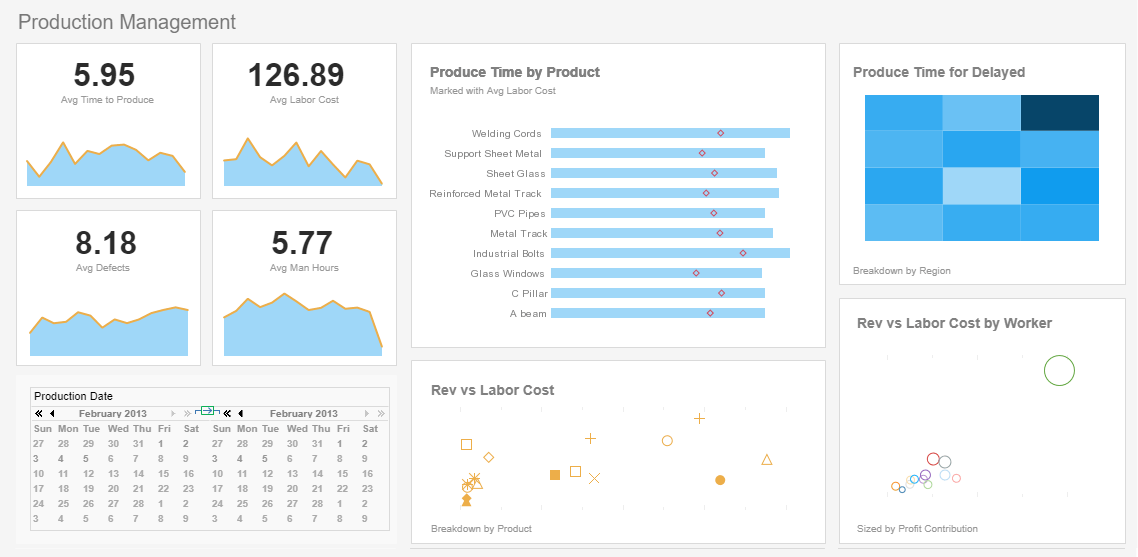Expansion of the Use of Mobile BI
This is the continuation of the transcript of a Webinar hosted by InetSoft on the topic of "Mobile BI: iPads & Tablets" The speaker is Mark Flaherty, CMO at InetSoft.
As expansion of the use of mobile BI occurs within these markets, these solutions will become standard solutions that are centralized so that mobile BI will have one access point independent of the medium you are accessing it through. What this means is that organizations will no longer be required to choose whether they want an on-premise BI or mobile offerings. Instead software providers will offer a single solution choice that includes all the various options for all the various devices, a single solution that will fit business users, BI specialists, and IT personnel.
That will be good for real-time users or for batch processes for a variety of databases whether they are OLAP or other types databases, and all of them will be available with advanced analytics and with intelligence that will give users the information that is the most relevant to them. So with that, let’s see an example of what mobile BI looks like.
Satisfy The Most Advanced Analysts
StyleBI offers advanced visualization and office integration that business users expect and demand within their infrastructure today and much more. It’s very intuitive and interactive for the business users and it doesn’t require any training. At the same time, by the way, the BI application’s advanced analytical capabilities are very strong, and they can satisfy the needs of the most advanced analysts and power users.
Next the focus is a lot on relevancy and contextual discovery. Instead of teaching a business user how to use BI and how it works, what are the right questions to ask in order to get answers from the BI systems? Style Intelligence eliminates the need for a business user to try and define a question. It eliminates the need for a business user to know the BI technology and modeling or the necessity for spending hours in research and then it just delivers the most relevant reports for the users to review.
Instantly, the user can identify the problem, and what’s more important, the root cause of that problem. It’s relevancy. Data has to have more linkage to action. When you see something is wrong, the data will tell you where it’s wrong and why, so decision makers are able to act on the information. You see how easy it has to collaborate inside the StyleBI solution with the drag-and-drop dashboard designer.
With that, let’s open it up to questions.
What type of organizations do you think would be the first to adopt BI on tablets?
Sure, you know it’s an interesting question. Initially we wondered whether it will be specific verticals or specific sizes of organizations where mobile devices are a better fit. There were a few theories that it fits more with larger organizations or that it fits specific verticals. But to be honest, the more we got closer to speaking with users and with organizations using it or considering it, we got to the conclusion that it really fits everybody.
Of course the first organizations who are going to use it will be those who are early adopters of technology in general and those who are trying to gain business advantages by using new technologies as a whole. But there is no trend of seeing that in any specific vertical or any specific size. It brings the same type of advantages both to financial organizations and retail organizations, or to small companies, medium companies or huge enterprises. We see the fit is the same for all of them.
Three Industries That Use Mobile BI
Healthcare: Mobile BI in healthcare puts critical operational and clinical metrics into the hands of clinicians, managers, and administrators when minutes matter. Doctors and nurses use mobile dashboards to view patient flow metrics, bed capacity, lab turnaround times, and early-warning scores at the point of care; hospital leaders get live views of ED wait times, staffing gaps, and supply shortages to reallocate resources quickly. Beyond operations, mobile BI supports clinical quality — enabling on-shift care teams to check adherence to protocols, infection rates, and outcome KPIs, and receive push alerts for out-of-range vitals or rising sepsis risk. Security, HIPAA-compliant access, offline caching for spotty coverage, and audit trails are essential features that make mobile BI practical and safe in clinical environments.
Field Services & Utilities: Field technicians and supervisors rely on mobile BI to keep distributed workforces productive and responsive. In utilities, telecom, and maintenance-heavy industries, mobile dashboards show real-time job status, SLA adherence, parts inventory at nearby depots, and geospatial outage heatmaps so crews can prioritize repairs and optimize routing. Supervisors use tablet or phone views to confirm work completion, capture time-and-materials instantly, and escalate urgent issues; predictive alerts (e.g., probable equipment failure) push to crews so preventive work can be scheduled before outages occur. The combination of offline data capture, GPS-enabled mapping, and embedded decision-support (replacement thresholds, safety checklists) turns mobile BI into an operational assistant rather than just a reporting screen.
Retail & Consumer Goods: Retailers use mobile BI to make store managers and regional leaders nimble, especially in omnichannel environments where inventory and customer demand shift rapidly. On mobile devices managers monitor sales velocity, inventory performance by SKU, price/promotions impact, and staff productivity — all updated throughout the day so they can move stock, change displays, or adjust staffing in near real-time. For field merchandisers and category managers, mobile BI provides visit checklists, assortment compliance reports, and photo-backed evidence of planogram adherence, while corporate teams push targeted KPI alerts when a promotion underperforms or a stockout risk emerges. The immediacy of mobile BI helps retail teams convert insight into action during the business day instead of after it ends.


